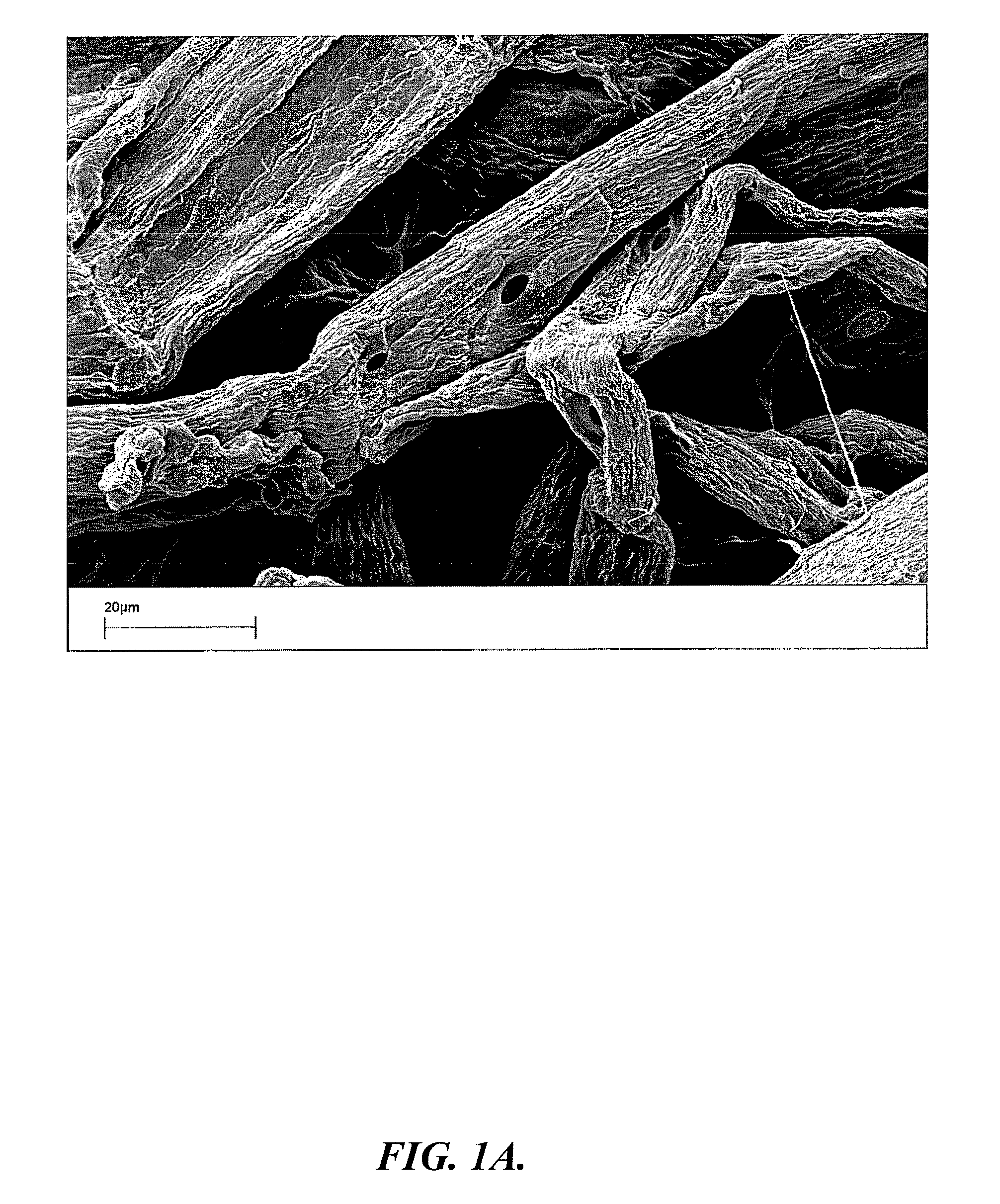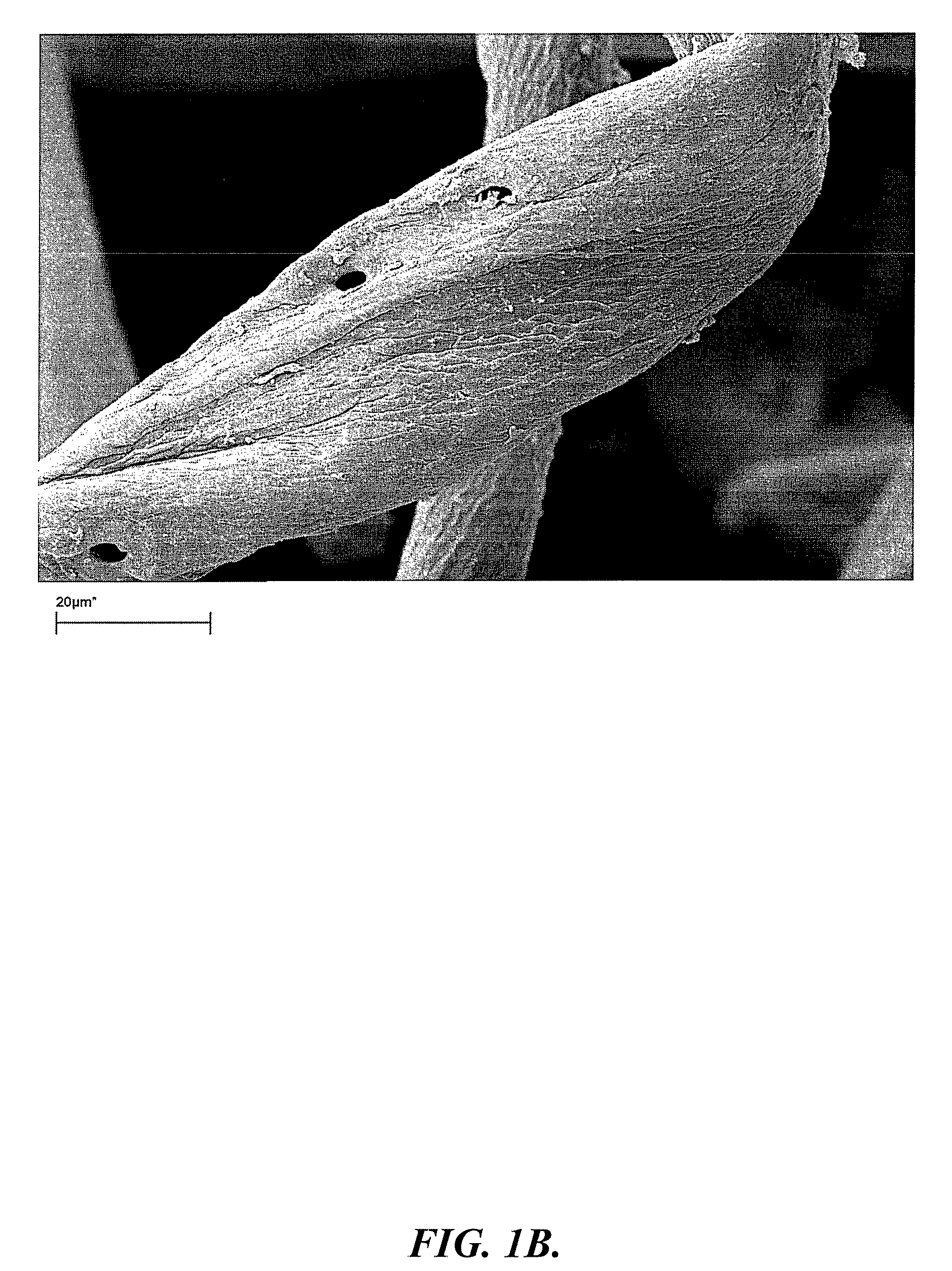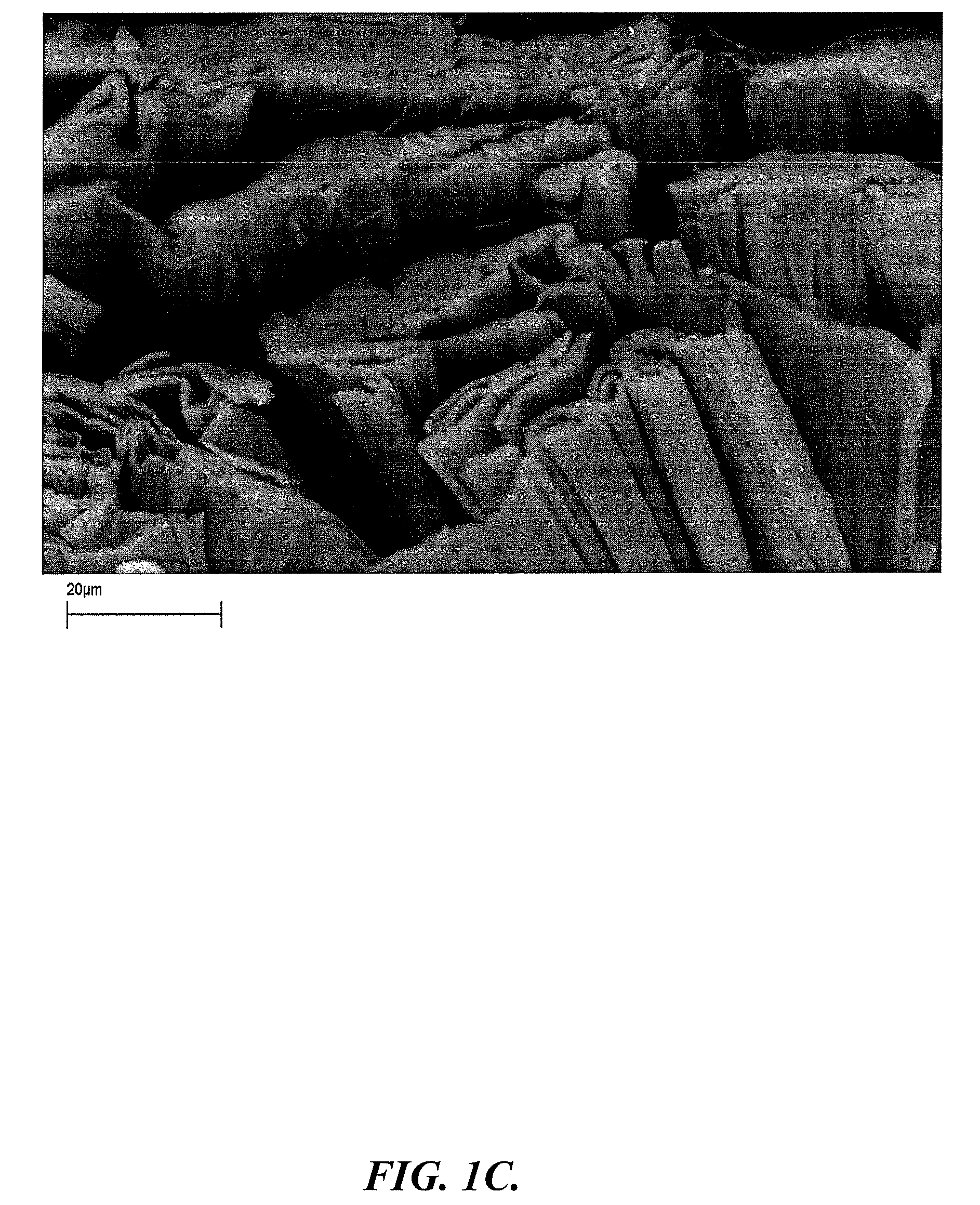Crosslinked carboxyalkyl cellulose fibers having permanent and non-permanent crosslinks
a technology of carboxyalkyl cellulose and fibers, which is applied in the direction of non-fibrous pulp addition, application, bandages, etc., can solve the problems of significant skin wetness, within the fibers' cell walls, and the fibers can absorb only about 2-3 g/g of liquid,
- Summary
- Abstract
- Description
- Claims
- Application Information
AI Technical Summary
Benefits of technology
Problems solved by technology
Method used
Image
Examples
example 1
The Preparation of Pre-Crosslinked Pulp
[0157]In this example, the preparation of crosslinked cellulosic pulp is described. The crosslinked cellulosic pulp can be used to make the carboxyalkyl cellulose fibers of the invention.
[0158]120 grams of never-dried northern kraft spruce (NKS) pulp (oven-dried (OD) weight is 40 grams) is mixed in a plastic bag with sodium hydroxide, if necessary, water for 10 minutes at 10% consistency. Liquid is then pressed from the pulp and collected. Crosslinking agent was added to the liquid and then mixed with pulp in the bag. The bag was heated at 85° C. in a water bath for 70 minutes. After reaction, the reacting mixture was diluted with deionized (DI) water, filtered, and repeated to obtain >25% consistency pre-crosslinked pulp for used for carboxymethyl cellulose (CMC) preparation.
[0159]Table 1 summarizes suitable crosslinking agents useful in making carboxyalkyl cellulose from crosslinked pulp.
[0160]
TABLE 1The preparation of crosslinked pulp useful...
example 2
Morphology of the Representative Crosslinked Carboxymethyl Cellulose Fibers
[0161]In this example, the morphology (e.g., twists) of representative crosslinked carboxyalkyl cellulose fibers of the invention is described.
[0162]The twists per millimeter were counted for the pulp or fiber samples in their dry condition and in wet condition in a seventy percent ethanol / water solution. The sample fibers were distributed on a microscope slide and the twist count per millimeter was performed by measuring the length of one hundred fibers and counting the number of twists on those fibers. A separate count of fibers with no twists was kept for computing the percent yield. The image analysis system was calibrated using a two millimeter American Optical scale mounted in glass on a microscope slide.
Twist nodes per millimeter=total number of twists / sum of the lengths.
[0163]% Yield=100*(1−(Tn / (Tn+100))) where Tn is the number of fibers without twists.
[0164]
TABLE 2Representative crosslinked carboxyme...
example 3
The Preparation of Representative Crosslinked Carboxymethyl Cellulose Fibers and Pads Including the Fibers
[0166]In this example, the preparation of representative crosslinked carboxymethyl cellulose fibers of the invention and pads including the fibers are described.
[0167]409 grams of never-dried carboxymethyl cellulose fibers from high alpha sulfite pulp (the carboxymethyl cellulose fibers were neutralized in 70 / 30 ethanol / water, filtered and washed with 70 / 30 ethanol / water, filtered, then washed with 100% ethanol and filtered to 409 grams) (oven dried 70 grams) was mixed in a solution containing 515 grams of ethanol, 960 grams of water, 53.6 grams AA or aluminum acetate dibasic / boric acid (boric acid as stabilizer, 33 percent by weight), and 4.0 grams of Sunrez 747 (a permanent crosslinker) for one hour. After the reaction, the slurry was filtered to obtain 240 grams of wet sample. The sample was pin mill fluffed to obtain fiber bundle. Part of the wet fiber bundle was oven dried ...
PUM
| Property | Measurement | Unit |
|---|---|---|
| length | aaaaa | aaaaa |
| diameter | aaaaa | aaaaa |
| length | aaaaa | aaaaa |
Abstract
Description
Claims
Application Information
 Login to View More
Login to View More - R&D
- Intellectual Property
- Life Sciences
- Materials
- Tech Scout
- Unparalleled Data Quality
- Higher Quality Content
- 60% Fewer Hallucinations
Browse by: Latest US Patents, China's latest patents, Technical Efficacy Thesaurus, Application Domain, Technology Topic, Popular Technical Reports.
© 2025 PatSnap. All rights reserved.Legal|Privacy policy|Modern Slavery Act Transparency Statement|Sitemap|About US| Contact US: help@patsnap.com



